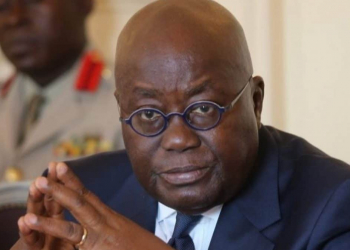Employing hundreds of young people adept at the art of dressmaking, sculpting, basket weaving, bead stringing, wood carvings and ceramics, among others, the handicraft sector has received very little support despite its potential to generate millions in revenue per year.
The global handicraft sector has an industry value of about US$100billion. Yet, the country has not positioned itself well enough to tap into this huge market.
Data from the Ghana Export Promotion Authority (GEPA) has shown that non-traditional export earnings from the handicraft sector grew by 23 percent in 2015; from US$3.47 million in 2014 to US$4.27 million, a far cry from what other economies earn from the sector.
Chairperson of the Craft Dealers Association of Ghana, Alhaji Tanko, notes that: “Government must create a fund purposely for handicraft production, just as it has done for the creative arts sector. This, when done, will see the sector’s contribution to the economy more than doubled.”
Agbleator Divine, a charcoal and pencil artist, who is a graduate from the Kwame Nkrumah University of Science and Technology (KNUST), said government must offer handicraft industry the same prominence as other sectors.
“From what I see, much attention is not given to the creative arts industry. We have to fight our way to the top. So I would urge government and the private sector to find a way of supporting this industry so that the youth will feel encouraged to go into this area,” he said.
Miriam Ntow-Atiemo, another graduate from KNUST who earns a living designing dresses and stringing beads said: “I want government to help art enterprises with funds that can enable us expand so that we can project the culture and image of the country, since we export our products to the foreign markets.
Government can also offer the industry publicity. If government officials take the lead in patronising local arts, others will learn from them and also patronise,” she said.
The gains from the sector in major economies such as UK, Canada, US, and Kenya portends that Ghana can increase its current revenue from the sector.
Crafts and small businesses, for instance, employ more than 66percent of Europe’s workforce– around 98 million people.
In the UK alone, craft skills contribute £3.4 billion to the economy, and the country’s Crafts Council estimates that there are around 23,000 micro-businesses are in the crafts sector.
Canada also exports about US$100 million worth of crafts and the sector employs about 22,597 persons in the various establishments.
In the United States, the art and craft industry in United States accounts for about US$13.8 billion and employs more than 127,000 people.
In East African country of Kenya, woodcarving plays a very important role in the economy, contributing an estimated US$10 million per year, of which a considerable part are export earnings.
The handicraft sector also accounts for 19 percent of Morocco’s GDP, earning the country more than US$70million in earning.
“As a country, we need to give more support to the sector to create more jobs and generate revenue,” Mr. Alhaji Tanko said.
Join GhanaStar.com to receive daily email alerts of breaking news in Ghana. GhanaStar.com is your source for all Ghana News. Get the latest Ghana news, breaking news, sports, politics, entertainment and more about Ghana, Africa and beyond.


